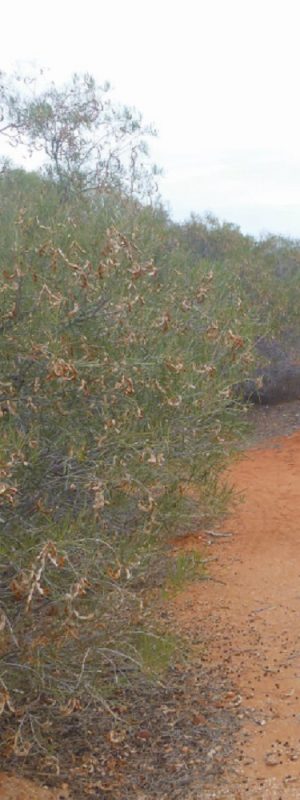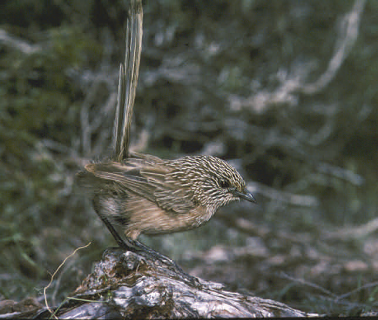Western Grasswren (Thick-billed Grasswren)
Western grasswren
(formerly thick-billed grasswren)
Amytornis textilis
Description
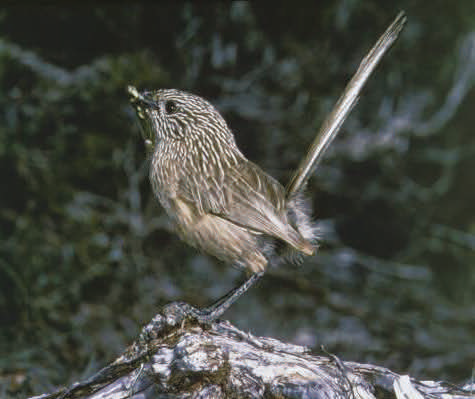
| Head-tail 170-190mm |
Weight 18-23g |
Earthy brown plumage marked with fine white streaks camouflage the western grasswren in its shrubby habitat. This grasswren was previously known as the thick-billed grasswren for its beak, which is heavier than that of other wren species and is used to crush seeds. It has a squeaky, reeling song and resembles a musical note itself, bouncing about jauntily with its long tail held high.
Diet and habitat

Its usual habitat is open saltbush and bluebush shrublands. In Shark Bay it prefers dense wattle shrubland typical of the country along the Monkey Mia road. This grasswren is shy of humans. Your best chance of seeing one is very early in the morning when they hop about the ground feeding, often in pairs or family groups. Although they will perch briefly on exposed branches, they dart undercover at the first sign of danger.
Breeding
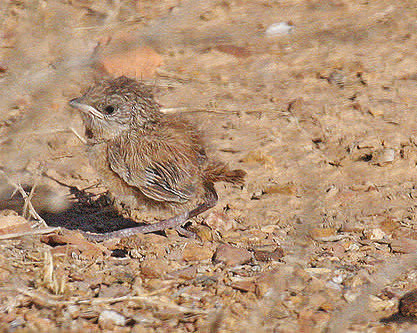
| No. eggs 2-3 |
Fledge 15-17 days |
Western grasswrens usually breed from July to September, but may also nest from January to April when good summer rain produces an abundance and insects. Females select sites in thick scrub near the ground and build hooded, cup-shaped nests with dry grass, twigs and bark. Unlike other species of grasswren, male western grasswrens help with incubation.
Distribution
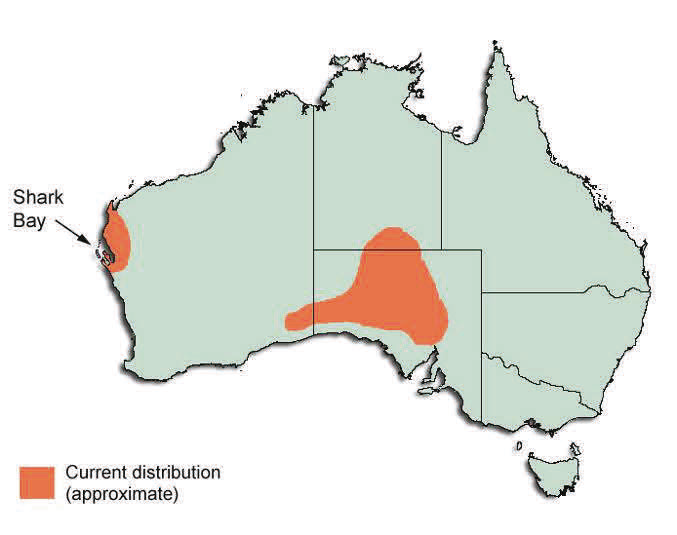
Once widespread from coastal WA to western NSW, this grasswren has declined dramatically over the last century. Today just three subspecies remain, each confined to small discrete areas. Shark Bay is an important habitat for A. textilis textilis and it will be translocated to Dirk Hartog Island as part of the Return to 1616 ecological restoration project.
Status
Feral cats and habitat degradation caused by goats and sheep are believed to have caused the grasswren’s extinction on Dirk Hartog Island and other parts of Australia. The western grasswren has recovered in Francois Peron National Park since removal of sheep and many goats and feral cats from Peron Peninsula.
Fact sheet
SHARK BAY
World Heritage
